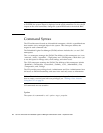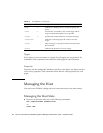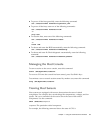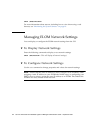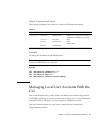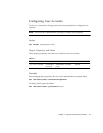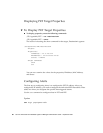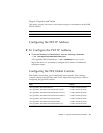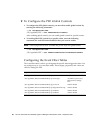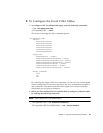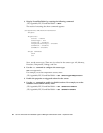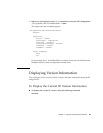
78 Sun Fire X4150 Server Embedded Lights Out Manager Administration Guide • September 2007
Managing Alerts
The system is equipped with sensors that read several system critical parameters,
such as voltages and temperatures. The system monitors these sensors and creates
an alert when a sensor reading crosses an upper or lower critical threshold level (for
more information, see “Configuring Platform Event Filters” on page 30).
You can manage these alerts, by using the CLI to create filters that trap alerts based
on the sensor type. You can then have the filters perform various preconfigured
actions in response to the alert. Configuring alerts with the CLI is a two step process.
First, configure a destination IP address in the PET. Second, configure a platform
event filter (PEF) to enable and perform various alert-triggered actions.
You manage alerts from the /SP/AgentInfo namespace, using the show and set
commands. The show command allows you to display current alert property and
value settings. The set command allows you to configure alert property and value
settings.
Displaying Alerts
Use the show command to display PET and PEF targets, properties, and values.
▼ To Display Alerts
● To display targets, properties, and target commands for PET, enter the
following command:
show /SP/AgentInfo/PET.
● To display targets, properties, and target commands for PEF, enter the
following command:
show /SP/AgentInfo/PEF
Before configuring alerts, you might want to display a target’s current settings.
This allows you to examine the current status of alerts. Use the cd command and
the show command, respectively, to navigate to targets and display property
values. For example:
–> cd /SP/AgentInfo/PET
/SP/AgentInfo/PET –> show



